 When sewing dresses and blouses with your own hands, you should think not only about the originality of the style, but also about how to process individual components of the product.
When sewing dresses and blouses with your own hands, you should think not only about the originality of the style, but also about how to process individual components of the product.
In this article, I will talk about several ways to finish the bottom of a sleeve without cuffs and give examples of several ready-made patterns for women's clothing that use this treatment on the bottom sections of the sleeves. Also, you can download for free my ready-made patterns of classic jacket sleeves for tall and short ones.
You should think over the sequence and features of sewing any product after choosing a style, but even before buying a fabric, since the methods of processing various knots will affect allowances and final consumption.
Of course, the easiest way to process the bottom of a sleeve without a cuff is to hem with an open or closed cut, that is, with a single or double hem.
The bottom of the product is processed in the same way.
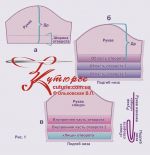 See how to process the bottom of the product and which machine stitches and sewing methods are suitable for this.
See how to process the bottom of the product and which machine stitches and sewing methods are suitable for this.
Download ready-made patterns with the processing of the bottom of the sleeve without cuff
1. The bottom of the sleeve with a one-piece lapel
Lapels are often used in any sports and military style clothing, as well as in the classics of men's clothing when sewing shirts with short sleeves and trousers. But they can be used in any dresses and blouses made of thin and medium-thick fabrics. Sleeves can be either non-stop or with a fit or kimono.
First, we determine the desired sleeve length in finished form, measuring it so as not to make a mistake on your favorite dress or blouse and make a sleeve pattern of the desired length (picture 1).
Then we draw a lapel width line on the sleeve pattern (figure 1a).
If you are a beginner couturier, you can make a lapel pattern (figure 1b), to use it when cutting - lay and trace along with the sleeve.
As a rule, the width of the lapel ranges from 2,5 to 4 cm.
It turns out that the part of the sleeve with a lapel will be 5-8 cm longer in the cut. The rest of the allowances for the seams are ordinary - 1 - 1,5 cm each, and we do not add an allowance for the collar.
It is very important that the lapel lines are transferred to both parts of the sleeves very accurately. It is better to use not crayons, but threads for marking. Can be marked with "snares" or ordinary cushioning seams.
Then the bottom is overcast if the hem is with an open cut.
After marking, the lapel is ironed almost like a regular warehouse (picture 1 at the bottom right is a diagram of an ironing for a hem with an open cut).
And then follows the tailor's trick: we sweep the lapel with oblique stitches, but the hem of the bottom is not. The hem of the bottom remains bent and in this position we overcast, grind and iron the “vertical” seam of the sleeve. After that, we bend and hem the bottom by hand.
This, of course, is only one of the possible options for processing a sleeve with a lapel.
2. Sewing sleeves, the bottom of which is turned
Why process the bottom with a turning (picture 2)? If the sleeve turns out to be short and you need to save length, if you need a facing of a different color and, of course, if the facing imitates a lapel.
Turning can be processed sleeves both in outerwear and in a light dress. The facing can be cut as a strip along an oblique thread, as a strip along a transverse or shared thread, and also cut out strictly according to the shape of the bottom of the sleeve, if it is curly.
Let's say you need to process the bottom of the sleeve of a coat with a piping during the restoration of a product whose bottom is worn at the fold (picture 3).
We cut out the facing along the oblique from a fabric close in color and quality, you can take a thinner fabric.
By connecting the facing into a ring (figure 3 a), iron the seam and then put it on the bottom of the sleeve so that the sleeve and facing are face to face. We sew, stepping back from the edge 0,5 - 0,7 cm (figure 3 b).
 Then, carefully cut off the fragments of the seams protruding along the bottom and cut the facing seam by 0,2 - 0,3 cm.
Then, carefully cut off the fragments of the seams protruding along the bottom and cut the facing seam by 0,2 - 0,3 cm.
And again tailor's trick (diagram below picture 3): we bend the seam allowances for turning the facing towards the facing and fasten them along the “face” of the facing with a machine line (line 2 in the diagram).
After laying the fixing line, we sweep the bottom of the sleeve figure 3 in), after which we iron it.
С lapel imitation, which can be used both in outerwear and in a light dress, everything is not much more complicated (picture 4).
We turn the facing stitched into a ring with an ironed seam by 1 cm on one side, we note and iron (figure 4 a).
We put the facing on the sleeve, turning it inside out, that is, the "face" of the facing - to the inside of the sleeve. We grind, as usual turning (figure 4 b), we cut the protruding seams.
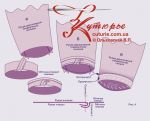 Then, we bend the stitching seam towards the sleeve and fix the allowances with a machine stitch (see diagram below). picture 4). Please note: in this case, the securing line goes on the wrong side.
Then, we bend the stitching seam towards the sleeve and fix the allowances with a machine stitch (see diagram below). picture 4). Please note: in this case, the securing line goes on the wrong side.
Now it remains only to mark the facing-lapel with oblique stitches 2 cm long, iron and baste it.
stitching (figure 4 in) turn-lapels can be made with decorative seams or thick finishing threads, but you can simply hem with blind stitches on your hands.
Download free sleeve patterns
- Download free patterns of double-seam classic sleeves for letterpress printing on A4...
- Download free patterns of double-seam classic sleeves for not tall, print on A4...
- Download free multi-format file for printing on A0-A4 sleeves for high...
- Download free sleeve pattern for short sleeves, multi-format file A0-A4...
Now about the simplest ways to process the bottom of sleeves without cuffs, which are suitable even for very thin fabrics (Fig. 5) and are available for sewing by novice couturiers.
3. Sleeves with elastic
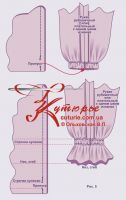 The calculation of the length of a sleeve with a drawstring on an elastic band has one feature - the need to add an overlap to the desired length in finished form. For example, if the desired dr \u60d 5 cm, then another XNUMX cm should be added to it for the overlap, and then allowances for processing the drawstring.
The calculation of the length of a sleeve with a drawstring on an elastic band has one feature - the need to add an overlap to the desired length in finished form. For example, if the desired dr \u60d 5 cm, then another XNUMX cm should be added to it for the overlap, and then allowances for processing the drawstring.
Let's try to calculate the length option with a regular drawstring (figure 5 above).
Let's say the width of the elastic is 0,7 cm, therefore, the width of the drawstring in the finished form should be - 1,2 - 1,4 cm.
This drawstring is essentially the same as a hem with a closed cut, that is, a double hem.
Hence the formula for the length of the sleeve in the cut:
dr + lap + 2 drawstring widths + 1 cm
We consider: 60 + 5 + (2 times 1,2) + 1 = 68,4 (cm) - the length has increased by 8,4 cm!
For drawstring with double frill (figure 5 below) the formula for calculating the length of the sleeve in the cut must also take into account the double width of the frill:
dr + overlap + 2 drawstring widths + 1 cm + 2 frill widths
We consider: 60 + 5 + (2 times 1,2) + 1 + (2 times 4) = 76,4 (cm) - the length has increased by 16,4 cm!
Processing a simple drawstring will require minimal cutting and sewing skills: overcast the “vertical” sections of the sleeve and stitch them with a gap at a distance of 1,2 cm from the bottom cut; iron the seam and iron the double hem; stitch the drawstring and screw in the elastic.
Processing a drawstring with a double frill involves only one difficulty - accurate marking. If you mark from the bottom, it will look like on 5 drawing - hem, drawstring width, two cuff widths and drawstring width again.
After grinding the “vertical” seam with a gap to pull the elastic in and iron it out, iron and sweep the 1 cm hem, bend the workpiece again along the bottom line, iron and sweep again. At the end, stitch the drawstring and screw in the elastic.
Of course, these are far from all the simple ways of processing the bottom of sleeves without cuffs, known to masters of cutting and sewing. For example, the drawstring can be replaced with several lines made with rubber threads. To do this, they should be wound on a bobbin with a slight tension or stitched like a cord in a zigzag.
4. Ready-made patterns of women's clothing with processing of the bottom of the sleeve without cuff
4.1. Chanel jacket patterns
PDF files for printing jacket patterns from 40 to 62 life-size on sheets of paper of any size. The style of the jacket is suitable for both slender and full figures. A detailed description of how to sew a women's jacket with your own hands of this style and style. The bottom of the sleeve is processed without a cuff.
Download ready-made patterns of jackets in the style of Chanel
4.2. Pattern of a fitted jacket with an oblique fastener
PDF file for printing ready-made jacket patterns in full size for sizes from 40 to 64. Sewing difficulty level: medium. Suitable for most types of figures of various fullness (except for the "apple"). The pattern is designed for sewing at home. Sleeves are processed without cuffs.
Download patterns of a fitted jacket
4.3. Vyshyvanka pattern young lady peasant woman
Sizes: 44-54 and 56-64. The style of this ethnic blouse, tunic or dress based on boots cut is suitable for most figures. But for owners of wide hips and a narrow shoulder girdle, it is recommended to wear the finished product, opening the shoulders...
4.4. Dress pattern in folk style
Electronic pattern of ethnic "rose" dress 44-62. File format: PDF, finished pattern in full size and without seam allowances. Sewing difficulty level: professional. The sleeves are processed without cuffs with an elastic band.
Download dress pattern in folk style
5. Patterns of dresses with different styles of sleeves
|
||||||||||||
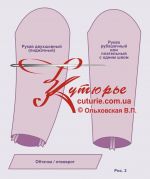










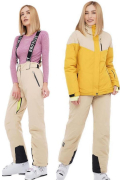
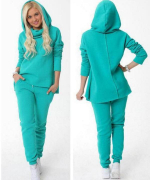



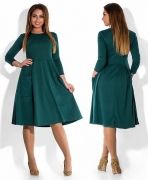


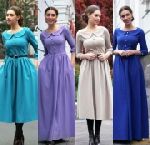


 Join my community on Viber...
Join my community on Viber...











